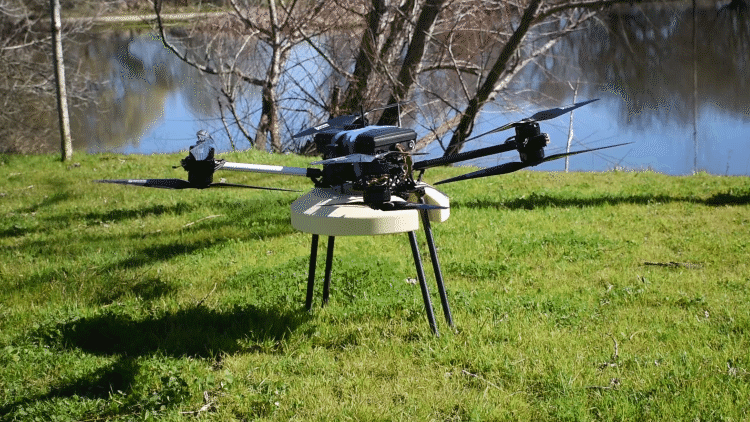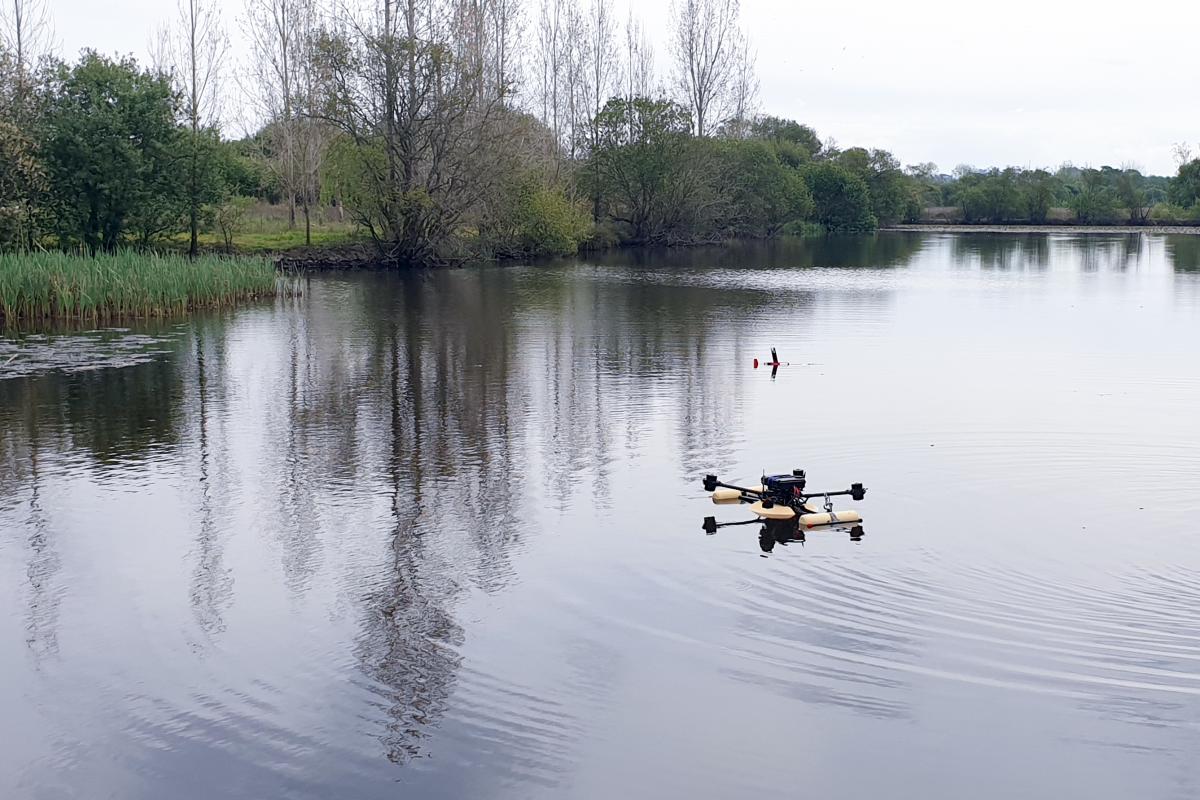New member on our fleet
We at the LSTS always strive for innovation and breaking the molds of conventional maritime operations. With that philosophy as our guideline, we set to find ways to improve our presence in the world of heterogeneous teams of autonomous vehicles.
The TITAN dual-quadcopter is the newest member on the LSTS aerial fleet. With eight 75cm propellers, 2m blade-to-blade diameter and weighing at 20kg, this water landing capable copter was equipped with an acoustic modem payload, becoming the first of its kind, capable of flying to the operational site, land in the water, communicate with AUVs assets, relay orders, retrieve data and finally take-off from water and return to base.
Running the LSTS Tool-Chain and being able to use a plethora of communication technologies (Wi-Fi,GSM, Satellite, etc), the TITAN was made to be the central point in any array of vehicles and operations on a maritime environment.

The TITAN was developed with maritime operations in mind, being resistant to seawater and able to withstand submersion for short periods, the vehicle is ideal for carrying specialized cameras, water sampling modules and communication relay payloads.
As more payloads are developed, more concepts of operations became available, allowing the team of vehicles at the LSTS to work together, and keep evolving stronger and more reliable.
The platform is being prepared for its début, in the CDC3 exercise at Hawaii by the end of April.
by João Galante

